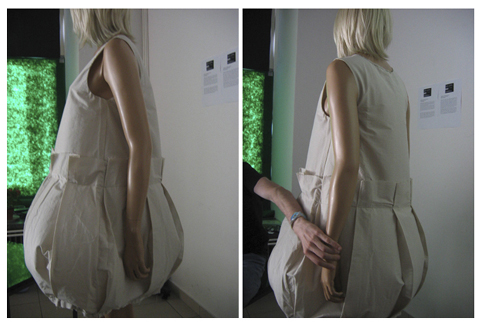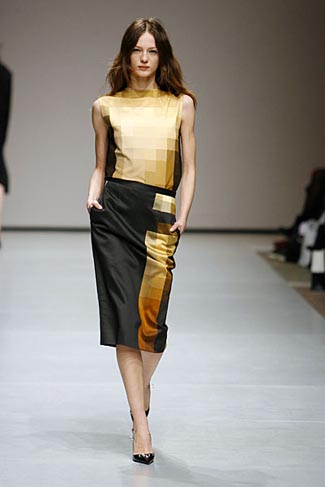Without
/Lika Volkova of SANS demonstrates their knit hats with embedded sunglass lenses, perfect for a sunny winter day.
The other night Fashion Projects stopped by the SANS home base to check out their most recent designs. Instead of a full line, for Fall 2008 duo Lika Volkova and Alessandro DeVito offered a precisely edited collection of knit sweaters and hats. The tops were multi-layered, with a finely tuned textile foundation supporting their cerebral shapes. Squares, rectangles and arcs formed the basis for SANS' polymorphic garments – each item (made from supple yarns) can be worn any number of ways, allowing the wearer to claim ownership of their look. The designers mentioned they had actually created many new garments, but had held off on showing them until the time was right. This low-key approach was a restrained, but successful design exercise focusing on the perfection of a single wardrobe element.
After chatting a bit about the gross prevalence of retailers and designers jumping on the green-washing wagon, it became apparent that SANS is not primarily about sustainability. Rather, Volkova and DeVito craft thoughtful and high-quality designs through their own unique synergy – Volkova’s creative eccentricities mesh well with DeVito’s textile knowledge and sourcing skills. SANS should not be considered as eco-design merely because it uses ethical textiles like organic or reclaimed wool, recycled polyester, or peace silk; in practice, SANS is sustainable because it resides outside the trend-driven fashion system, with each garment a conjoined effort of vision and substance.
Sarah Scaturro
















